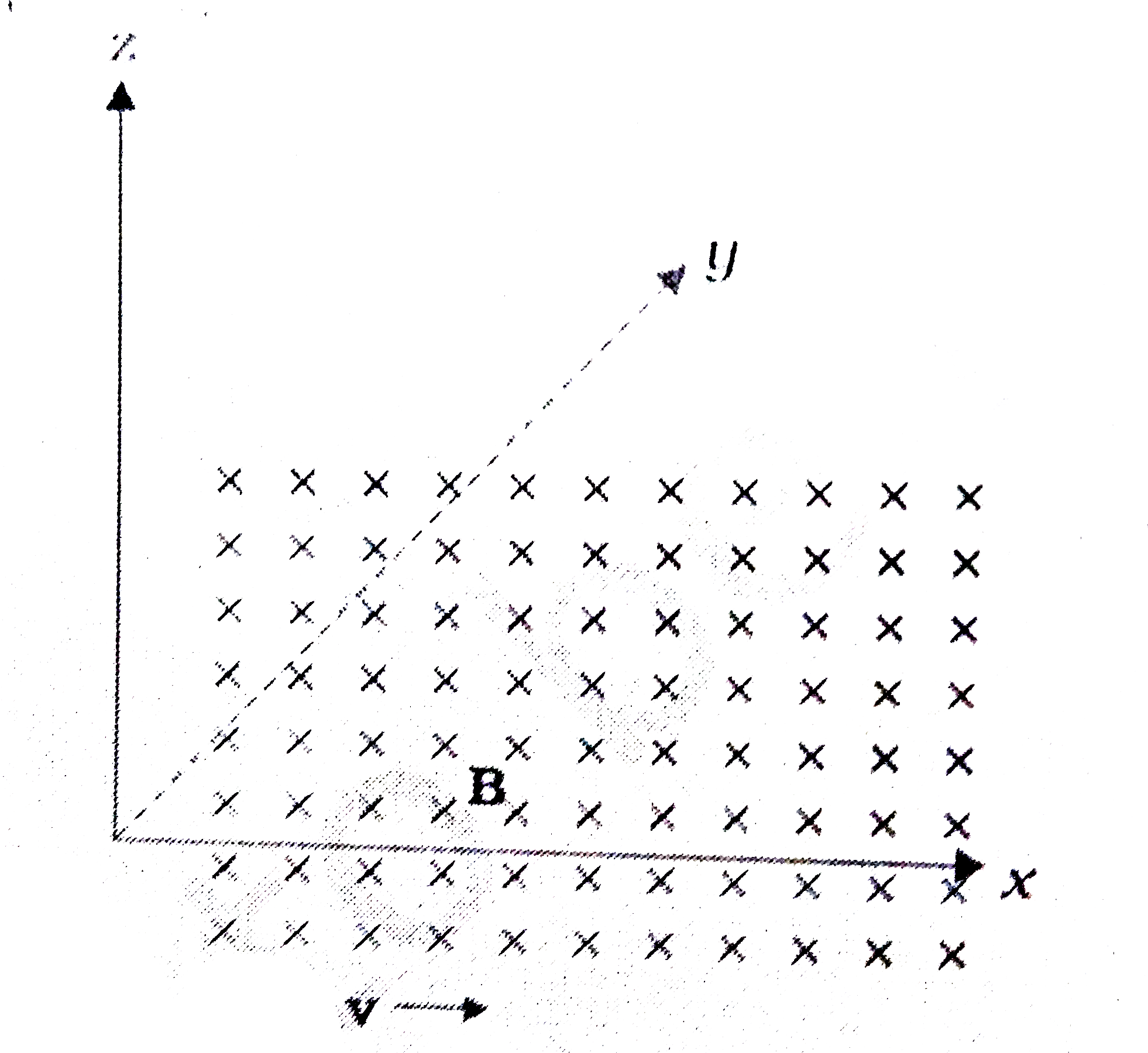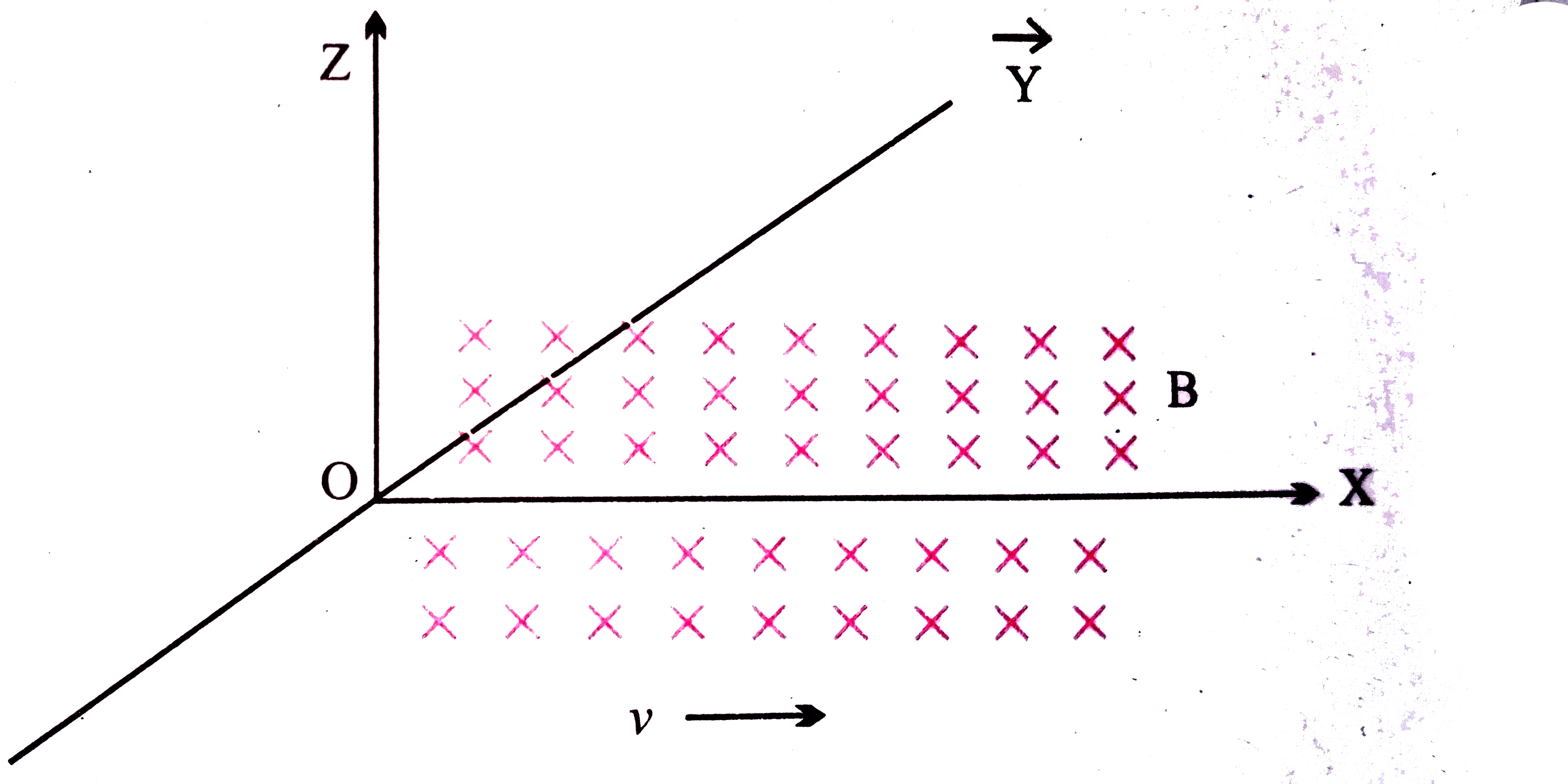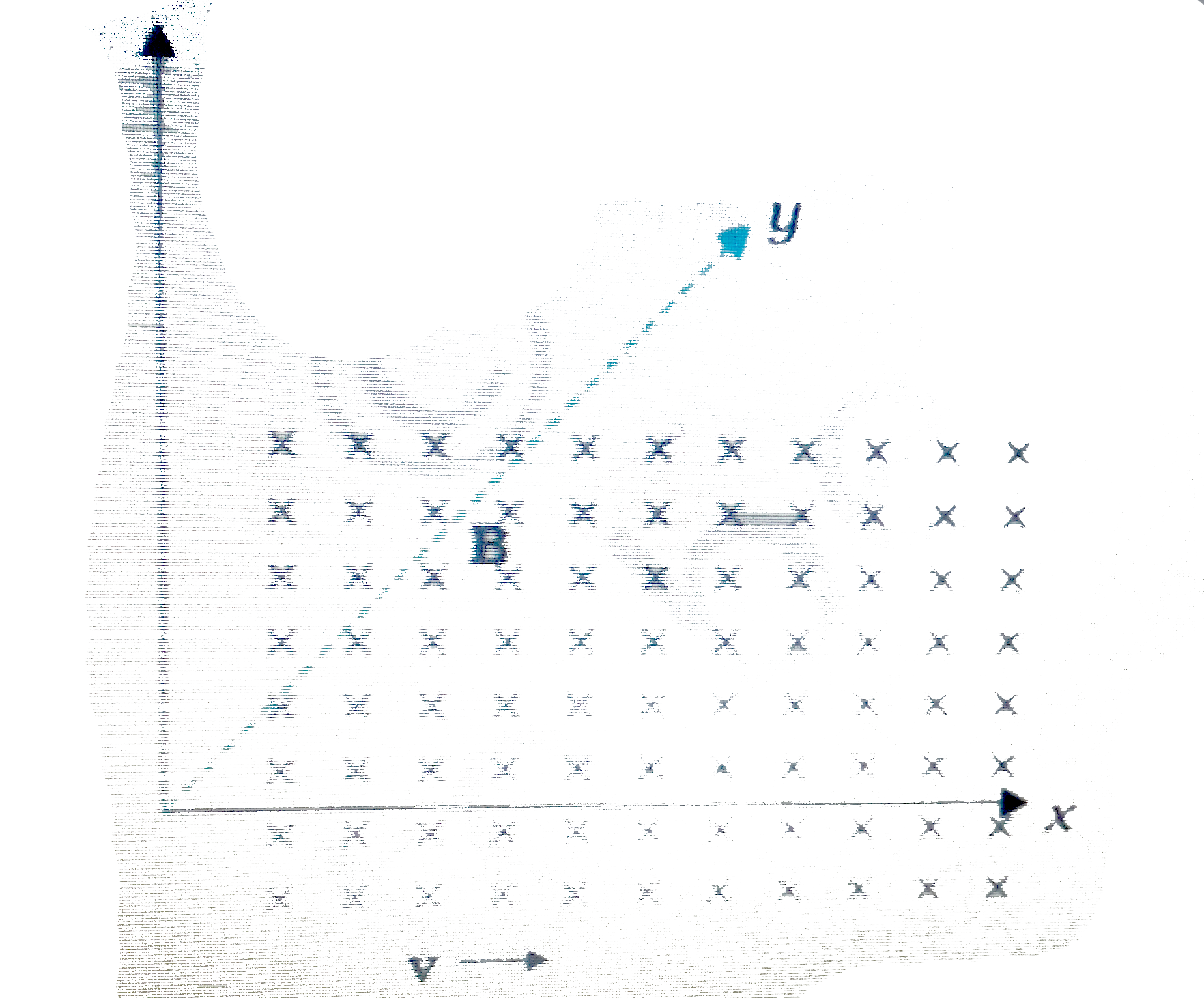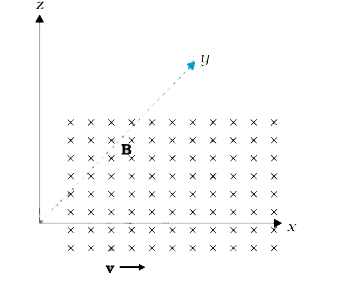If the magnetic field is parallel to the positive y-axis and the charged particle is moving along the positive x-axis (figure ), which way would the Lorentz force be for (a) and electron (negative charge), (b) a proton (positive charge)Solution in Tamil
The velocity v of particle is along the x-axis while B , the magnetic field is along the y-axis, so v×B is along the z-axis (screw rule or right -hand thumb rule ) . (a) For electron it will be along -z axis . (b) For a positive charge (proton) the force is along +z axis .

Topper's Solved these Questions
- BOOK - NEW JOYTHI PUBLICATIONCHAPTER - MOVING CHARGES AND MAGNETISMEXERCISE - SOLUTIONS TO EXERCISES FROM NCERT TEXT21videos
MOVING CHARGES AND MAGNETISM
- BOOK - NEW JOYTHI PUBLICATIONCHAPTER - MOVING CHARGES AND MAGNETISMEXERCISE - PRACTICE PROBLEMS FOR SELF ASSESSMENT20videos
MOVING CHARGES AND MAGNETISM
- BOOK - NEW JOYTHI PUBLICATIONCHAPTER - MAGNETISM AND MATTEREXERCISE - COMPETITIVE EXAM CORNER13videos
MAGNETISM AND MATTER
- BOOK - NEW JOYTHI PUBLICATIONCHAPTER - NUCLEIEXERCISE - COMPETITIVE EXAM CORNER23videos
NUCLEI
Similar Questions
A cirular coil of wire cansiting of 100 turns ,each of readius 8.0 cm carries a current of 0.40 A. What is the magnitude of the magnetic field ¯¯¯B at the centre of the coil ?
02:19View SolutionA vertical wire carries a current of 17 A. If the neutral point is observed at a distance of 10 cm from the wire, calculate the horizontal compoinent of earth's magnetic field .
01:58View SolutionChoose the correct statement .
05:46View SolutionRadioactive 6027Co is transformed into stable 6028Ni by emitting two γ - rays of energies
04:35View SolutionA charged particle moves along positive y-axis with constant velocity in uniform electric and magnetic fields. Ilf magnetic fiedl is actig along positive x-axis, then, electric field should act along positive z-axis. Reason: To keep the charged particle undeviated the relation E=Bxxv must hold good.
03:54View SolutionA positively charge particle moving along x -axis with a certain velocity enters a uniform electric field directed along positively y-axis. Its
03:52View SolutionIf the magnetic field is parallel to the positive y-axis and the charged particle is moving along the positive x-axis (Fig.), which way would the Lorentz force be for (a) an electron (negative charge), (b) a proton (positive charge).
05:46View Solutionयदि चुंबकीय क्षेत्र धनात्मक y- अक्ष के समांतर है तथा आवेशित कण घनात्मक x -अक्ष के अनुदिश है (चित्र 4.4 दिखिए), तो लोरेन्ज बल किस और लगेगा जबकि गतिमान कण a) इलेक्ट्रॉन (तृण आवेश) b) प्रोटोन (धन आवेश) है।
 04:10View Solution
04:10View Solutionयदि चुम्बकीय क्षेत्र धनात्मक Y-अक्ष के समान्तर है तथा आवेशित कण धनात्मक X-अक्ष के अनुदिश गतिमान है तब निम्न चित्रानुसार लॉरेंज बल किस ओर लगेगा । जबकि गतिमान कण, इलेक्ट्रॉन (ऋण आवेश), प्रोटॉन (धन आवेश) है ।
 02:08View Solution
02:08View Solutionएक प्रोटॉन धनात्मक X-अक्ष के अनुदिश गति कर रहा है, जबकि धनात्मक Y-अक्ष के अनुदिश एकसमान चुंबकीय क्षेत्र कार्य कर रहा है। प्रोटॉन पर कार्य करने वाले बल की दिशा बताईए।
03:12View SolutionIf the magnetic field is parallel to the positive y-axis and the charged particle is moving along the positive x-axis (Fig.), which way would the Lorentz force be for (a) an electron (negative charge), (b) a proton (positive charge).
 05:40View Solution
05:40View SolutionIf the magnetic field is parallel to the positive y-axis and the charged particle is moving along the positive x-axis (Fig. 4.4), which way would the Lorentz force be for (a) an electron (negative charge), (b) a proton (positive charge).
View SolutionIf the magnetic field is parallel to the positive y-axis and the charged particle is moving along the positive x-axis (Fig. 4.4), which way would the Lorentz force be for (a) an electron (negative charge), (b) a proton (positive charge).
 01:42View Solution
01:42View SolutionIf the magnetic field is parallel to the positive y-axis and the charged particle is moving along the positive x-axis (Fig.), which way would the Lorentz force be for (a) an electron (negative charge), (b) a proton (positive charge).
 03:05View Solution
03:05View SolutionIf the magnetic field is parallel to the positive Y-axis and the charged particle is moving along the positive X-axis as per figure, which way would the Lorentz force be for (a) an electron (negative charge), (b) a proton (positive charge).
View Solution

